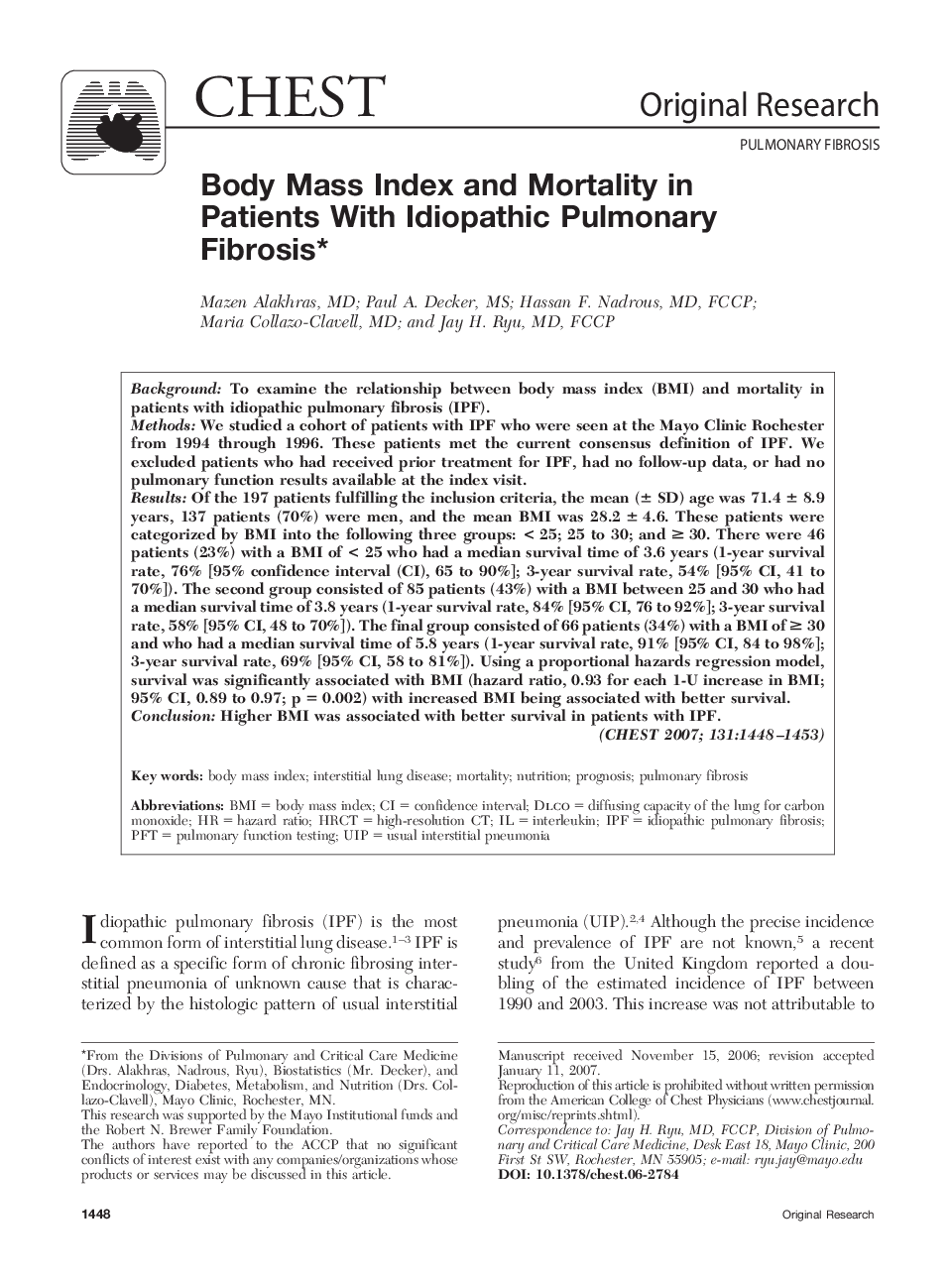| Article ID | Journal | Published Year | Pages | File Type |
|---|---|---|---|---|
| 2904718 | Chest | 2007 | 6 Pages |
BackgroundTo examine the relationship between body mass index (BMI) and mortality in patients with idiopathic pulmonary fibrosis (IPF).MethodsWe studied a cohort of patients with IPF who were seen at the Mayo Clinic Rochester from 1994 through 1996. These patients met the current consensus definition of IPF. We excluded patients who had received prior treatment for IPF, had no follow-up data, or had no pulmonary function results available at the index visit.ResultsOf the 197 patients fulfilling the inclusion criteria, the mean (± SD) age was 71.4 ± 8.9 years, 137 patients (70%) were men, and the mean BMI was 28.2 ± 4.6. These patients were categorized by BMI into the following three groups: < 25; 25 to 30; and ≥ 30. There were 46 patients (23%) with a BMI of < 25 who had a median survival time of 3.6 years (1-year survival rate, 76% [95% confidence interval (CI), 65 to 90%]; 3-year survival rate, 54% [95% CI, 41 to 70%]). The second group consisted of 85 patients (43%) with a BMI between 25 and 30 who had a median survival time of 3.8 years (1-year survival rate, 84% [95% CI, 76 to 92%]; 3-year survival rate, 58% [95% CI, 48 to 70%]). The final group consisted of 66 patients (34%) with a BMI of ≥ 30 and who had a median survival time of 5.8 years (1-year survival rate, 91% [95% CI, 84 to 98%]; 3-year survival rate, 69% [95% CI, 58 to 81%]). Using a proportional hazards regression model, survival was significantly associated with BMI (hazard ratio, 0.93 for each 1-U increase in BMI; 95% CI, 0.89 to 0.97; p = 0.002) with increased BMI being associated with better survival.ConclusionHigher BMI was associated with better survival in patients with IPF.
